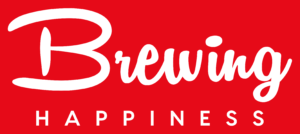Request for proposal (RFP) processes are integral to securing services and products for businesses and organizations, but they often involve a complex web of tasks and communications. With advancements in technology, RFP software has emerged as a game-changer in procurement, offering a plethora of advantages that manual processes cannot match.
These tools are not just about saving time; they bring a level of precision and control over the RFP process that enhances decision-making and productivity. Companies now have the power to manage their RFPs with greater speed, efficiency, and collaboration than ever before. Keep reading to delve deeper into the multifaceted benefits this technology offers.
Exploring the Efficiency of Request for Proposal Software in Streamlining Procurement
Manual RFP processes often cause delays, errors, and unnecessary costs. Request for proposal software simplifies procurement by automating tasks like document distribution, data entry, and response collection. This leads to faster, more accurate proposals while keeping teams aligned with deadlines through reminders and scheduling tools.
Beyond time savings, the software brings structure to proposal evaluation with customizable scoring systems. It also offers better visibility into procurement trends by organizing past and present RFP data, helping businesses plan smarter, find cost-saving opportunities, and improve supplier performance.
Enhancing Collaboration and Communication through RFP Software Features
RFP software is crucial for successful RFP processes due to its ability to facilitate effective teamwork and streamline communication. It allows team members to work together on RFP documents in real-time, eliminating silos and ensuring all stakeholders are on the same page. The platform also offers integrated messaging and comment capabilities, enhancing understanding and ensuring clear feedback.
It can send notifications and updates to team members, maintaining transparency and accountability during the evaluation phase. Some RFP software platforms also include vendor communication capabilities, simplifying the process of engaging with potential suppliers and ensuring all vendors have access to the same information.
How RFP Software Contributes to Better Vendor Evaluation and Selection
RFP software aids decision-makers in evaluating vendors during the RFP process by providing structured comparison tools and allowing evaluators to rank proposals based on quantifiable metrics. This method reduces bias and increases the chances of selecting the most suitable vendor. RFP software also makes vendor profiles and histories more accessible, providing insights into vendor performance and reliability.
It maintains fair competition among vendors by anonymizing proposals, allowing evaluators to focus on content and quality without being influenced by the submitter’s name or reputation. The software facilitates post-selection communication, maintains good relationships with suppliers, and upholds the integrity of the RFP process.
The Strategic Role of RFP Software in Risk Management and Compliance
RFP software is crucial in procurement due to its strategic role in risk management. It standardizes the RFP process, reducing oversights and identifying potential red flags. It automates tracking and reporting of compliance-related data, ensuring industry standards and legal requirements are met.
The software also provides clear audit trails and record-keeping functionalities, ensuring every step of the RFP process is documented. It also offers robust security features, such as secure data storage, user authentication protocols, and encryption, protecting confidential information from unauthorized access. RFP software not only secures compliance but also allows companies to make informed decisions with a comprehensive view of potential risks associated with their procurement choices.
Measuring the Return on Investment in Request for Proposal Software Solutions
Investing in RFP software can yield significant financial returns, including direct cost savings and efficiencies in procurement processes. Higher-quality vendor selection can lead to better contract terms, improved services, and products, contributing to long-term financial health. RFP software also enhances vendor relationships and identifies cost-saving opportunities, providing an ongoing return on investment.
Its data analysis capabilities help companies anticipate market trends, position themselves advantageously, and negotiate more effectively. Indirect benefits like enhanced team collaboration, improved vendor communication, and strengthened compliance contribute to a healthier organizational ecosystem, laying the groundwork for sustained procurement excellence and a stronger competitive edge.
Conclusion
Altogether, the utilization of RFP software offers appreciable financial advantages while fortifying procurement practices through enhanced efficiency, collaboration, and strategic decision-making. Those seeking to maintain a competitive edge in today’s fast-paced business environment will find that investing in RFP technology is a wise and essential move.




